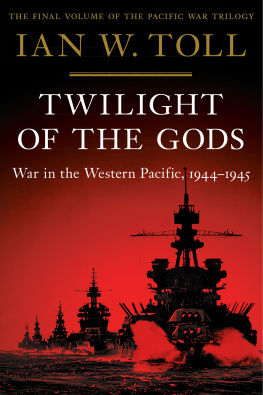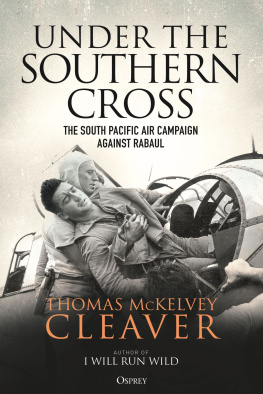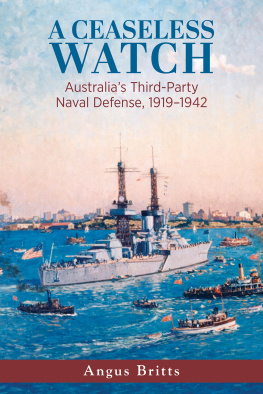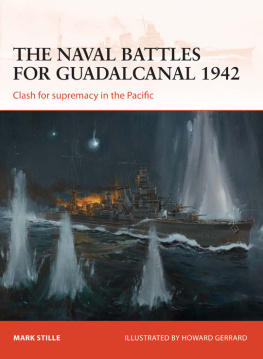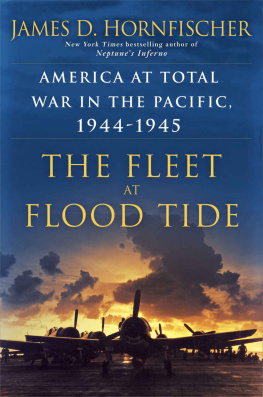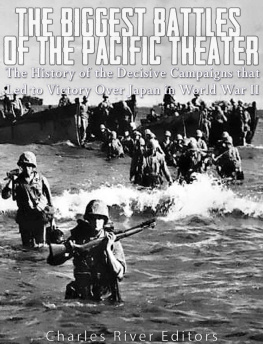The
Conquering
Tide
War in
the Pacific Islands,
19421944
IAN W. TOLL

W. W. NORTON & COMPANY
Independent Publishers Since 1923
New York London

To Adam
CONTENTS
When aiming uncertainly for a landfall, somewhere in the blue immensity of the South Pacific, navigators watched for floating leaves or coconuts. They steered to follow seabirds overhead. They noted distant columns of thunderheads, which might be hovering over islands tucked beneath the horizon. They even lifted their noses and sniffed the breeze, because every so oftenespecially at night or in thick weatherland could be smelled before it could be seen. Nowhere was this more true than in the Solomons, an archipelago of fetid jungle-islands a few degrees south of the equator, flung diagonally along a 500-mile axis between the Coral Sea and Bougainville Island. The larger islands of the Solomons gave off an aroma of damp soil and rotting vegetation that could travel ten to twenty miles out to sea.
To sailors on a ship approaching the source of that peculiar scent, the shoulders of the mountains loomed gradually out of the mist, even if the peaks remained hidden within impenetrable cloud caps. Plains and valleys, laid out in a patchwork of darker and lighter shades of green, spread beneath the mountains. Palm groves and mangrove swamps emerged along the shore. Finally they spied the beach, a white horizontal border between the islands verdant overgrowth and the warm cerulean sea.
The Solomons are dominated by a dozen large islands arranged in a double chain. Scattered among those mountainous landmasses are hundreds of small and mostly uninhabited islets or atolls, some rising barely 10 feet above sea level. The natural history of the region, which lies astride the southern arc of the Pacific Ring of Fire, has been fantastically violent. Subduction zones, where one part of the planets crust is shoved under another, and sea trenches plunge to depths of 20,000 feet or more, run parallel along the archipelagos northern and southern flanks. But the islands themselves, thrust up from the seabed by the same sorts of tectonic and volcanic forces, ascend to peaks of 5,000 to 7,000 feet. Mount Popomanaseu on Guadalcanal, 7,661 feet above sea level, stands just seven miles (as the crow flies) from the islands southern shore. If that same crow flew ten more miles out to sea, it would cross the edge of the South Solomon Trench, which plunges to a depth of 17,500 feet. Only on the Ring of Fire do such extremes of ocean deeps and high peaks occur in such proximity.
On the eve of the Second World War, the Solomons were home to about 100,000 dark-skinned Melanesians, the descendants of ancient nomadic peoples who had migrated from Asia across Pleistocene land bridges or navigated across the sea in hand-carved canoes. They lived much as they had in centuries or millennia pastin small villages and isolated tribal and family units, wearing little or nothing, scratching out a Neolithic subsistence by hunting, fishing, foraging, raising pigs, and tending small plots of taro and yams. They spoke about a hundred different languages or dialects, which were, in many cases, so divergent as to be unintelligible even between neighboring tribes. Their lingua franca was a rough and ready derivative of English called pidgin, whose vocabulary ran to about 600 words. They did not share any sense of nationhood; they owed devotion only to their tribal kin, their ancestors, and their sacred places.
Savage wars were recorded in their oral traditions. In the span of a few generations, history became legend; in the span of a few more, legend became myth. Young men, upon reaching a certain age, took up arms to settle their legendary and mythic blood feuds. Descending suddenly on rival tribes and villages, they killed, beheaded, and ate their enemies. Headhunting and cannibalism were rife throughout the nineteenth century, an era when the natives first came into regular contact with European seafarers. Unscrupulous whites practiced an illegal slave trade known as blackbirdingtricking or forcing natives aboard their ships to be transported to Australia, where they were put to work on cane plantations. The victims tribesmen were inclined to retaliate against anyone who looked like the malefactors. A white man who went ashore thus risked being beheaded and roasted for a feast. Afterward, his severed head might be shrunken and kept by his killer as a souvenir. Before the British took control of the Solomons in 1893 (vowing to put an end to blackbirding, headhunting, and cannibalism alike), the archipelago had earned a reputation as one of the most dangerous places on earth.
Putting aside for a moment the issues of self-determination, economic exploitation, and political legitimacy, history will show that half a century of colonial rule achieved a Pax Britannica in the Solomons. London governed the islands as a protectorate rather than a crown colony, asserting a relatively narrow authority over the affairs of its indigenous people. The islanders lived much as they had in the past, under the village authority of their tribal chiefs (headmen or bigmen) and according to their own inherited customs and laws. Rather than resorting to arms, the bigmen appealed to colonial officials to mediate their disputes, and were generally willing to be bound by the judgments rendered. A tribe running short of food could petition for relief, and would be fed or resettled in a place with arable land or fishing rights. It is impossible to know at this remove what proportion of the natives genuinely welcomed the British government, but by the 1930s, very few hated it enough to oppose it outright. Even in the earlier years of the protectorate, organized revolts against British authority were scattered and short-lived. By 1941, there were none, and on most islands no standing force was needed to maintain order. The Solomons natives were simply overawed by the whitesby their weapons, their ships, their technology, and perhaps most of all, their airplanes. Such unfathomable power lay beyond their ken. To think of opposing it was absurd; better to acquiesce and make the best of it. Many islanders were fervently loyal to the British, and would have occasion to prove it in the impending Pacific War.
The seat of colonial government was the somnambulant little island of Tulagi in the Nggela (or Florida) island group, twenty miles north of the much larger island of Guadalcanal. On Tulagi, three miles long and shaped like an hourglass, the British had assembled all the requisite trappings of colonial lifean officers club, a barracks, a hotel, a stately official residence, a small golf course, a cricket pitch, a wireless station, and a waterfront with rudimentary seaport amenities. The larger outlying islands were divided into districts, and each district was administered by a district officer (DO)generally a young, unmarried man on the first rung of a career in the British Colonial Service. The district officer had to brave primitive living conditions, suffocating heat, and recurring attacks of malaria. He lived alone, in a modest house on the coast, near the best natural harbor available. More often than not, his house doubled as the local government headquarters. His portfolio of responsibilities was very broad, but he had no staff other than the natives he recruited, trained, and employed. He was a governor, judge, police chief, coroner, tax collector, civil engineer, record-keeper, harbormaster, paymaster, and postmaster. All public funds were funneled through his hands, and he was expected to account for every penny in his official record books. He trudged from village to village on muddy jungle footpaths, or sailed a small wooden schooner along the coast, where most of the population was concentrated.
Next page


